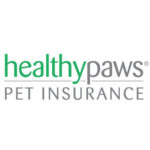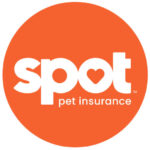Best Pet Insurance For Poodles In 2025
To me, Healthy Paws seems to be the best choice for pet insurance that caters to Poodles’ needs.
We’ve saved shoppers an average of $350 per year on their pet insurance.
A surprising 80% of pet owners are unable to manage an unexpected $500 veterinary bill, which is why pet insurance is crucial for financial security.
In this review, we’ll cover the best pet insurance options for Poodles, assisting you in selecting the policy that meets your needs. Pet insurance, much like human health insurance, offers better care options while keeping costs down.
Best Pet Insurance Companies For Poodles, 2025
Different insurance companies that specialize in Poodles share common goals of caring for your pet's health and offering financial help. However, they have their distinctions. What suits one pet might not be the best fit for another. Here are the top pet insurance companies for Poodles:



Compare The Best Pet Insurance Companies For Poodles
Having analyzed the top pet insurance options for Poodles as outlined before, it's clear that numerous well-established companies are competing for the top positions. Each company also presents its own distinct advantages. Here's a concise overview to offer you insights into each insurer.
| Overall Rating | Best For | Waiting Period | Reimbursement % | Benefit Limit | Get A Quote | |
|---|---|---|---|---|---|---|
| Healthy Paws |
|
Overall |
15 days accident/illness |
70%, 80%, 90% |
Unlimited annual and lifetime |
Instant Quote |
| Lemonade |
|
Cheap |
2 days accident, 14 days illness |
70%, 80%, 90% |
$5,000 to $100,000 annually |
Instant Quote |
| Many Pets |
|
Puppies |
15 days accident/illness |
70% or 80% (Most States) |
Unlimited annual and lifetime |
Instant Quote |
| Pumpkin |
|
Older Dogs |
14 days accident/illness |
90% |
$10,000 , $20,000 or unlimited |
Instant Quote |
| Spot |
|
Multiple Pets |
14 days accident/illness |
70%, 80%, 90% |
$2,500 to unlimited |
Instant Quote |
Detailed Reviews Of The Best Poodle Insurance Companies
Best Overall
Key Statistics
Why We like Them
⇅Healthy Paws excels as the best pet insurance option because it doesn’t impose any limits on claim payouts, per-incident caps, or restrictions. While it might require more investment, the value is clear as it eliminates tough decisions based on policy limits. The straightforward policy doesn’t include expensive add-ons and lets you see any licensed vet. Filing claims is a breeze with their app or online, and most are processed within two days.
Benefits & Drawbacks
⇅- Unrestricted reimbursements annually and for all time.
- Efficient handling of the majority of claims in under 2 days.
- We promise a refund within 30 days
- Chance to directly compensate veterinarians. ✓
- Missing regular wellness insurance option ✘
Runner-Up For Best Overall
Key Statistics
Why We Like Them
⇅Lemonade offers the most budget-friendly pet insurance for Poodles. Its coverage limits are similar to other providers, though it lacks the unlimited option provided by Healthy Paws. Lemonade’s annual coverage spans from $5,000 to $100,000, with higher premiums for greater coverage. Their standard policy includes accidents and illnesses, such as cancer, heart disease, skin conditions, fractures, and hip dysplasia in older Poodles. However, like most providers, Lemonade does not cover preexisting conditions, dental care, behavioral issues, or elective procedures.
Benefits & Drawbacks
⇅- Participate in a wellness plan that's at your disposal.
- Benefit starts shortly after an accident with a two-day waiting period.
- Add pet insurance to your Lemonade home, renters, or car insurance and receive a 10% discount. ✓
- There isn't a pet telehealth service available 24/7.
- Vet examination costs come with an added charge.
- The policy does not extend to prescription food or microchipping, I regret to inform you. ✘
Best For Puppies
Key Statistics
Why We Like Them
⇅ManyPets is the best option for puppy insurance. Rates are not influenced by pre-existing conditions, and any that are cured may become eligible after 18 months. Unrelated conditions can still be covered. As with all puppies, Poodles are prone to health issues such as poisoning, foreign object ingestion, and accidents from their high energy levels. Getting them insured early helps avoid exclusions for pre-existing conditions later.
Benefits & Drawbacks
⇅- Available in over 40 states nationwide.
- Allows for optional health initiatives.
- Covers veterinary examination expenses for both illness and accident-related issues. ✓
- Pet owners lack access to a 24/7 telehealth hotline.
- This policy does not pay for pet behavioral therapy.
- Regrettably, alternative medical treatments aren't covered. ✘
Best For Older Dogs
Key Statistics
Why We Like Them
⇅Older Poodles are prone to genetic issues such as cruciate ligament tears and hip dysplasia, which can require expensive treatments. Pumpkin covers these conditions without making you wait and includes vet exam fees for senior Poodles. They offer a range of coverage options for surgeries, dental care, and other health issues Poodles might face. You can pick from three deductible options, and they generally reimburse 90% of costs.
Benefits & Drawbacks
⇅- Select to enroll in an available health improvement plan.
- Get reduced rates on pet insurance for insuring multiple pets.
- Claim a hefty 90% reimbursement for pets aged 8 weeks and beyond. ✓
- We don't have a 24/7 pet telehealth hotline at this time.
- We don't have an accident-only plan as one of the options. ✘
Best For Multiple Pets
Key Statistics
Why We Like Them
⇅Poodles’ friendly nature often leads their owners to have multiple pets. Spot caters to this by giving a 10% discount on insuring more than one pet, leading to significant savings. Their extra preventive care plan covers annual vet visits, fecal tests, teeth cleanings, and even some vaccinations. Spot also provides a 30-day money-back guarantee if you’re unsatisfied with the service. With up to 90% reimbursement on qualifying vet bills and a 24/7 helpline, you can visit any licensed vet or specialist in the U.S.
Benefits & Drawbacks
⇅- Offers microchip implant services.
- Presents a $100 deductible possibility.
- Presents a pet telehealth line that's accessible 24/7. ✓
- Accidents come with a 14-day waiting period, which differs from the 2-day period some leading competitors offer. ✘
Average Cost Of Pet Insurance For Poodles
| Company | Deductible | Annual Reimbursement % | Monthly Price | Age Of Dog |
| Healthy Paws | $500 | 70% | $70 | 5 year old |
| Lemonade | $500 | 70% | $40 | 5 year old |
| Spot | $500 | 70% | $73 | 5 year old |
| Healthy Paws | $500 | 80% | $37 | 1 year old |
| Lemonade | $500 | 80% | $21 | 1 year old |
| Spot | $500 | 80% | $54 | 1 year old |
| Healthy Paws | $500 | 70% | $38 | 3 month old |
| Lemonade | $500 | 70% | $29 | 3 month old |
| Spot | $500 | 70% | $83 | 3 month old |
Is Pet Insurance Worth It For Poodles?
Pet insurance is essential for protecting against unexpected vet bills. While many pet parents can cover their pet’s medical expenses, a large portion of Americans struggle with a $1,500 emergency charge. A solid pet insurance policy provides a financial cushion that allows you to prioritize your pet’s health without worrying about costs. The perceived value of pet insurance depends largely on your expectations.
If your pet is currently receiving treatment for a chronic illness and you need help with expenses, you may feel let down, as none of the companies in our review cover pre-existing conditions. However, understanding your policy, its coverage details, and matching it with your budget can make it a valuable investment.
Common Health Issues For Poodles
Health issues are common in purebred dogs like Poodles, often due to genetic factors. In some cases, breeders may not have considered these concerns during breeding, contributing to widespread problems in the Poodle community. Compared to other dog breeds, Poodles tend to suffer from genetic health issues more frequently. Below are some of the most prevalent health problems in Poodles:
- Cancer (Oral Melanoma, Mast Cell Tumors)
- Brachycephalic Obstructive Airway Syndrome (BOAS)
- Patellar Luxation
- Hip Dysplasia, Legg-Calvé-Perthes Disease
- Corneal Ulcers, Entropion, Dry Eye
- Skin Fold Dermatitis, Infections
Average Cost Of Typical Vet Procedures
| Typical Vet Procedure | Average Cost Of Procedure |
| Puppy vaccinations | $75-100 |
| Flea & tick prevention | $40-200 |
| Heartworm prevention | $24-120 |
| Spay or neuter surgery | $200-800 |
| Annual exam | $240-600 |
| Teeth cleaning | $200-500 |
| Microchip | $40 |
Average Cost Of Emergency Vet Procedures
| Emergency Pet Procedure | Average Cost Of Procedure |
| General consultation/exam | $100-$150 |
| General bloodwork | $80-200 |
| X-rays | $150-$250 |
| Ultrasound | $300-$600 |
| 1-2 day hospitalization | $600-$1,700 |
| 3-5 day hospitalization | $1,500-$3,500 |
| Wound treatment & repair | $800-$1,500 |
| Emergency surgery | $800-$2,500 |
| Oxygen therapy | $500 |
How To Find The Best Pet Insurance Company For You
The variety in costs and coverage options among pet insurance plans can make it challenging to select the best one. To assist you in finding the right policy for your pet, consider these recommendations before making a choice:
Check Whether Your Pet Is Eligible
Young puppies and kittens typically need to be at least 6 to 10 weeks old to qualify for insurance, based on the company’s policies. Some insurers might limit first-time enrollment for senior pets or restrict them to accident coverage. However, once your pet is insured, most plans guarantee lifelong coverage if premium payments are maintained.
Research What’s Covered
Pet insurance typically covers costs like surgeries, hospital stays, and medications when your pet is injured or ill. However, certain things may incur additional fees or may not be covered by some companies. Here are a few examples:
- Exam fees: If your dog has a broken leg, for example, some plans may cover X-rays, surgery, and pain medication but might not include the vet’s checkup fee.
- Alternative treatments and rehab: Some plans include alternative therapies like acupuncture and physical therapy, while others may charge extra.
- Behavioral therapies: Many plans do not cover treatments for behavioral problems such as aggression.
- Prescription food: Certain plans might exclude prescription food or supplements even if they are recommended by your vet for a covered condition.
- Dental care: Coverage for dental issues can vary greatly among plans. Some may not cover conditions like gum disease or tooth problems, and others may require recent cleanings for coverage. Some wellness add-ons might cover dental cleanings. It’s important to remember that pet insurance generally doesn’t cover pre-existing conditions, cosmetic procedures, or costs related to breeding.
Decide How Much Coverage You Want
Most pet insurance policies set an annual payout limit, but a few do not impose such caps. It’s your responsibility to select a coverage level that makes you feel secure about managing vet costs. If your dog or cat is healthy, you might go for years without spending more than on regular checkups. However, unforeseen surgeries or major illnesses can result in veterinary bills that soar into the thousands.
Understand Reimbursements And Deductibles
In pet insurance, the majority of plans will reimburse a portion of your veterinary costs. When you sign up for a plan, you typically get to select a reimbursement level, such as 70%, 80%, or 90%. However, some policies provide a fixed fee for certain treatments, which might be lower than what your veterinarian charges, requiring you to pay the difference out of pocket.
Almost all plans also have a deductible, which is the upfront amount you pay before the insurance starts covering expenses. You can often choose from several deductible options, like $100, $250, or more. Some plans apply the deductible for every issue your pet faces, while most just require it to be paid once a year.
Generally, if you select a lower deductible and higher reimbursement, your premiums will be higher, but opting for a higher deductible and lower reimbursement will lower your premiums.
Check Waiting Periods
Upon purchasing an insurance plan, there’s usually a brief waiting period of approximately 14 days before full coverage for accidents and illnesses takes effect. Treatments are not covered during this initial period. Longer waiting periods may be applicable to certain conditions such as cruciate ligament injuries, which affect a dog’s knee stability and mobility.
Examine Extra Costs
A few pet insurance companies offer coverage for routine services like check-ups and vaccinations. While this may sound appealing, it’s crucial to determine if the additional cost is justified. Compare the yearly cost of the wellness insurance plan to your usual annual expenses for these services. Make sure to review the specifics carefully, as what constitutes “wellness” can vary among pet insurance providers.
Compare Quotes
The cost of pet insurance varies depending on the provider and the type of coverage. Certain insurers give discounts for covering multiple pets, potentially saving money. Yet, discounts aren’t a guarantee of the best plan. The only way to find the right insurance for your pet is by researching and comparing quotes from different plans. Ensure your comparison is fair, considering coverage levels, deductibles, and reimbursement limits.
Factors That Impact Cost Of Your Pet Insurance Policy
Similar to health insurance, several factors can influence the cost of your pet insurance, including:
- Location: Insurance providers consider local veterinary costs when determining your policy’s premium.
- Pet’s Age: As pets age, they tend to have more health issues, leading to higher premiums.
- Pet’s Breed: Some breeds are more prone to health problems. For instance, bulldogs and Boston terriers often have respiratory issues, while larger breeds like Pugs have a higher risk of hip dysplasia. These potential health concerns can affect the cost of your insurance.
- Deductibles, Coinsurance, and Coverage Limits: If you’re not willing to pay much out of pocket for your pet’s care, your insurance premiums will be higher. For instance, a $100 deductible will result in quicker reimbursements compared to a $500 deductible, but your premiums will be steeper.
Our Methodology
The ratings were derived from a comprehensive review of insurer websites, customer reviews, other review platforms, and personal experiences with pet insurance.
Quotes Analyzed
Years Of Industry Experience
Brands Reviewed
Research Hours
FAQs
Is pet insurance cheaper for purebred dogs?
Insurance for purebred dogs is typically more expensive due to their genetic predispositions toward costly health issues compared to mixed-breed dogs.
What is the average cost of owning a Poodle?
In the beginning year, costs come to about $3,000, covering vaccinations, food, grooming, and insurance. However, in subsequent years, expenses drop to around $1,900 annually.
What insurance do you need for a dog?
Having pet insurance is recommended for dog owners so they can afford veterinary care and maintain their pets’ well-being.
Sources
⇅